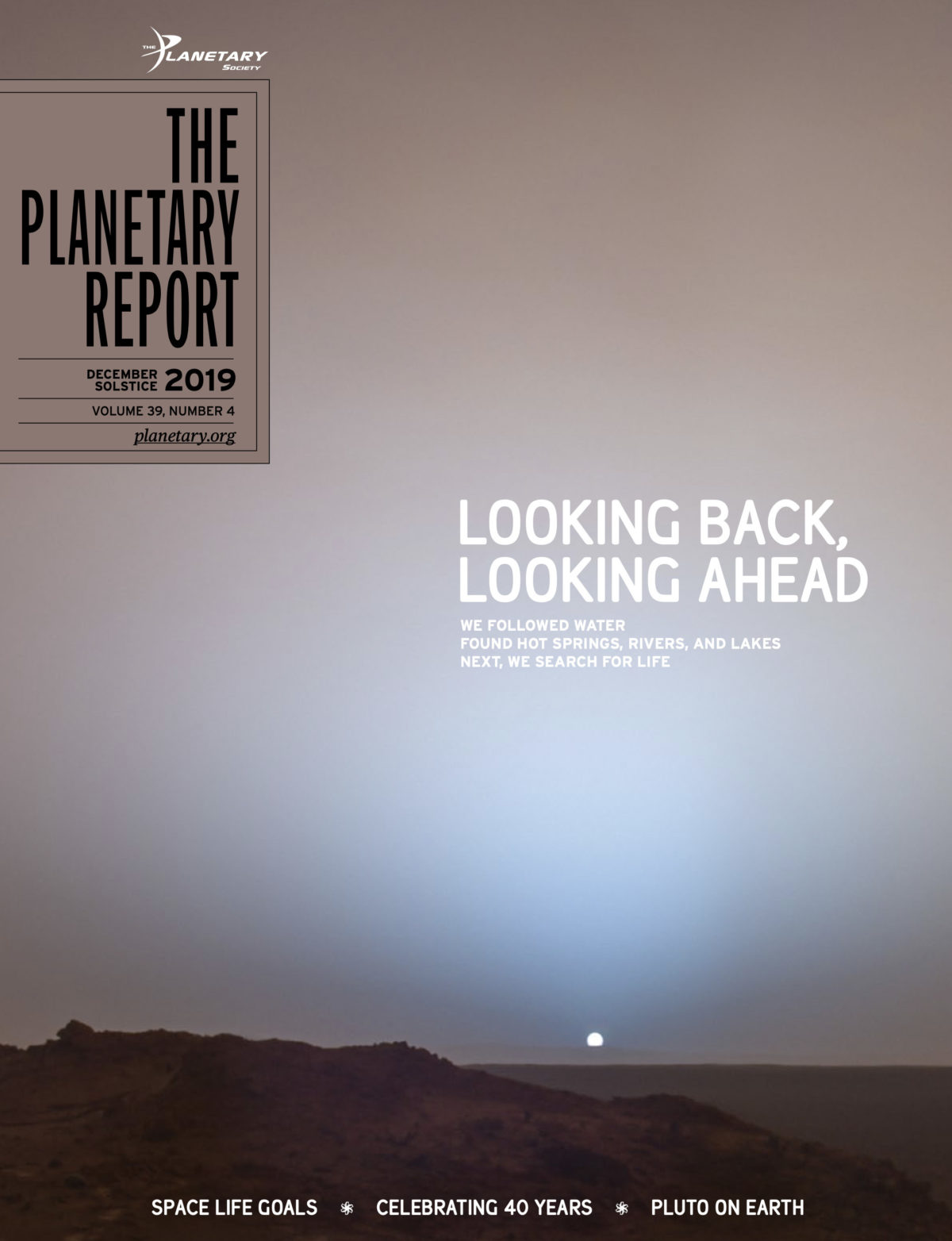A New Understanding
How Spirit and Opportunity Changed Our View of Mars
The Mars Exploration Rover science team gathered in Pasadena, CA for our final meeting on 11 June 2019, and I wondered if I had ordered enough Thai food. I had been the deputy project scientist for the Mars Exploration Rover Opportunity for 3 years, capping 15 years of involvement with the mission as a graduate, an undergraduate, and even a high school student. That night, I was responsible for organizing an evening celebration bringing together engineers and scientists to toast the end of the surface mission. For all of us, the rovers had been a part of our daily lives for years or even decades, and this group was just a small subset of the thousands of people who had contributed to making the mission a reality. It was important that we marked the achievement appropriately.
NASA launched the identical rovers Spirit and Opportunity in July 2003. At the time, our strategy for studying Mars was summarized by the mantra “follow the water” because liquid water is an essential ingredient for life. Today, it may seem like there’s a news story every few months reporting that water was discovered on Mars, but things were different 2 decades ago. We had known that Mars had frozen water ice in its poles and water vapor in its atmosphere, but we could only hypothesize that there had been liquid water on the planet in its past. Mars-orbiting spacecraft had imaged channels that seemed to have been carved by water, and they had spotted evidence of minerals that could have formed in water, but we really needed to get down onto the surface to test these hypotheses.

Geologists had dreamed of roving on Mars ever since images that were returned from the Viking landers in the 1970s showed tantalizing rocks that were just out of reach of the landers. The Jet Propulsion Laboratory has built all of NASA’s Mars rovers. In 1997, the Pathfinder rover Sojourner had demonstrated that it was possible to drive on Mars, and Spirit and Opportunity were the first mobile rovers with a fully capable payload. Spirit and Opportunity’s instruments were designed to collect clues about how Martian rocks and soils formed and could see if their elements and minerals had ever been altered by liquid water. The rovers were each designed to drive at least 600 meters over 90 Martian days (sols). It was anyone’s guess as to how well the mission would work or if it would even succeed at all.
Of course, most of us know the ending of the story. By the time NASA Associate Administrator Thomas Zurbuchen declared the mission complete on 13 February 2019, Spirit had traveled more than 7.73 kilometers (4.80 miles) over 2,208 sols of operation, while Opportunity drove more than 45.16 kilometers (28.16 miles) in 5,111 sols. The data the 2 rovers returned from their adventures changed our view of Mars. Spirit and Opportunity not only followed and found evidence for liquid water but also discovered that Mars was wet many different times in the past and in many different environments, both on and beneath its surface.
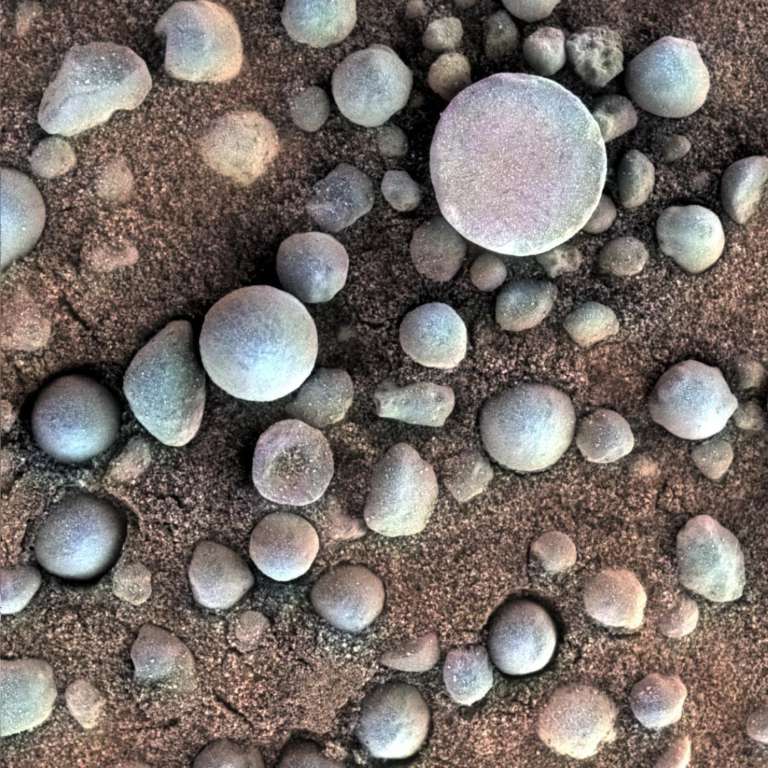
Water on Mars
Although it landed second, Opportunity was the first of the rovers to find evidence of past liquid water, locating it in the sedimentary outcrops and hematite “blueberries” in Eagle crater. Not to be outdone, Spirit followed suit several years later when it detected minerals that form in water, including goethite and carbonate, in the Columbia Hills. By mission’s end, the rovers had driven through 5 different geologic settings. Four of the 5 settings preserved evidence of at least a dozen unique times when liquid water had interacted with the Martian surface and subsurface.
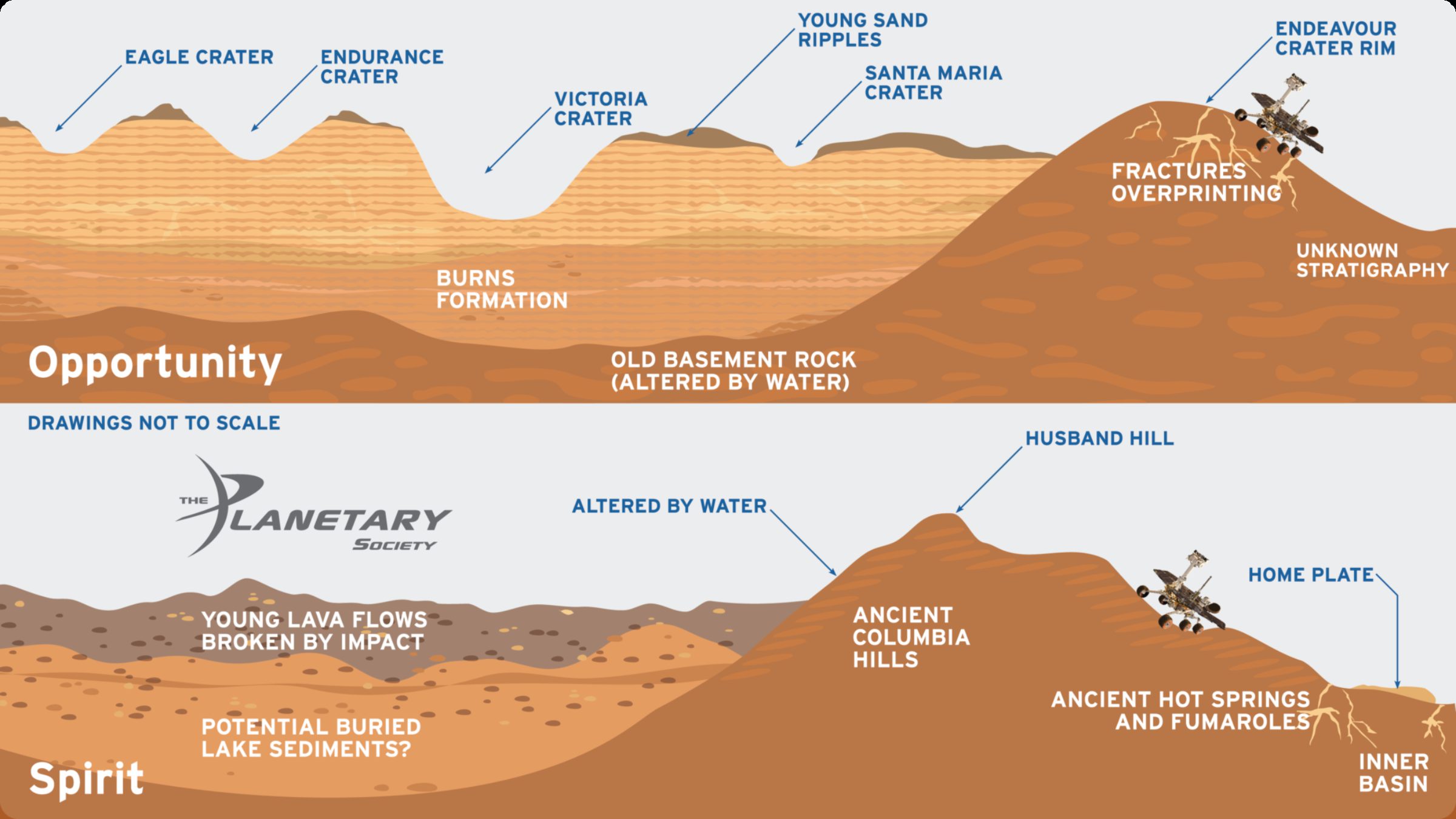
In the plains of Meridiani Planum, Opportunity roved atop ancient acidic playas where very salty water had been exposed to the atmosphere, evaporating to leave its salts behind. Once dried, the salts had been eroded, trans-ported, and deposited into sand dunes that were later cemented into rock when groundwater rose from beneath them, dissolving and redepositing salts into the pore spaces between the sand, gluing the grains together. The acidic, salty environment would not have been especially friendly to life, but later in Opportunity’s mission, it found that pH-neutral groundwater had flowed many different times through fractures in the ancient rocks that made up the rim of Endeavour crater.
On the other side of the planet, Spirit found different kinds of watery environments. At the base of Home Plate within the Columbia Hills, Spirit roved where ancient fumaroles had left thick deposits of silica and sulfate salts centimeters below the surface, and extinct hot springs had left behind finger-shaped nodules made of nearly pure silica. On Earth, similar structures are always associated with biology. Spirit’s findings were so exciting to astrobiologists that the Home Plate site was one of the top 3 finalists for a landing site for a future sample return mission.
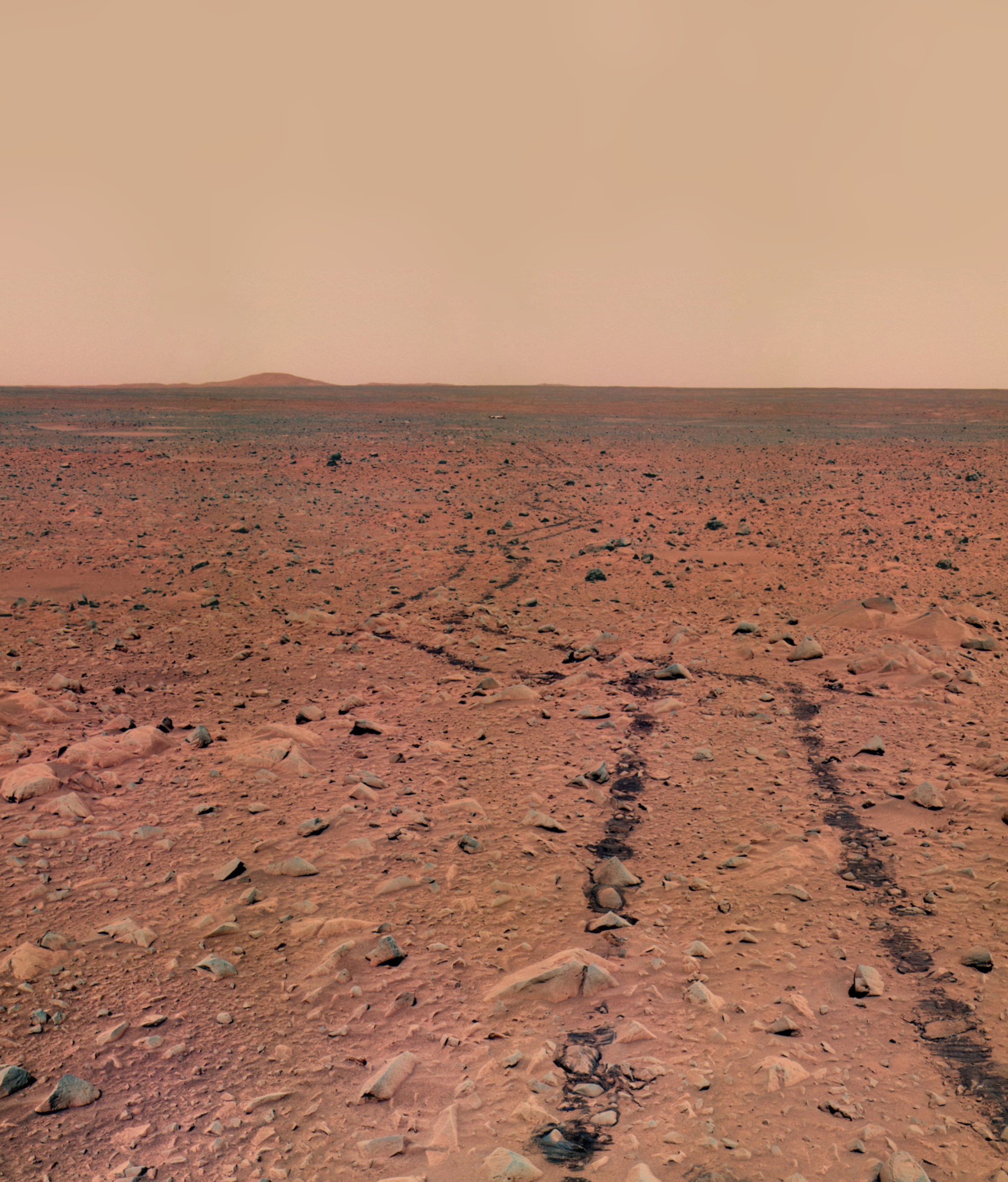
Eyes in the Sky, Hands in the Dirt
Spirit and Opportunity conclusively demonstrated the value of operating landed missions in synergy with science orbiters. For example, in 2009, the Compact Reconnaissance Imaging Spectrometer for Mars (CRISM) instrument on the Mars Reconnaissance Orbiter discovered that clay minerals were present at several locations along the rim of Endeavour crater. On Earth, clay minerals most commonly form when volcanic minerals are altered by liquid water. The rover science team directed Opportunity to the exact CRISM-detected spots. The journey took more than 3-and-a-half years, but it paid off in science. In one spot, the rover discovered clays that formed when there was lots of water flowing through a fracture. In another area, Opportunity discovered different clays, also in fractures, that probably formed by a very small amount of stagnant water. Now, geologists can return to the CRISM data set and find spots all over Mars where similar environments probably existed.
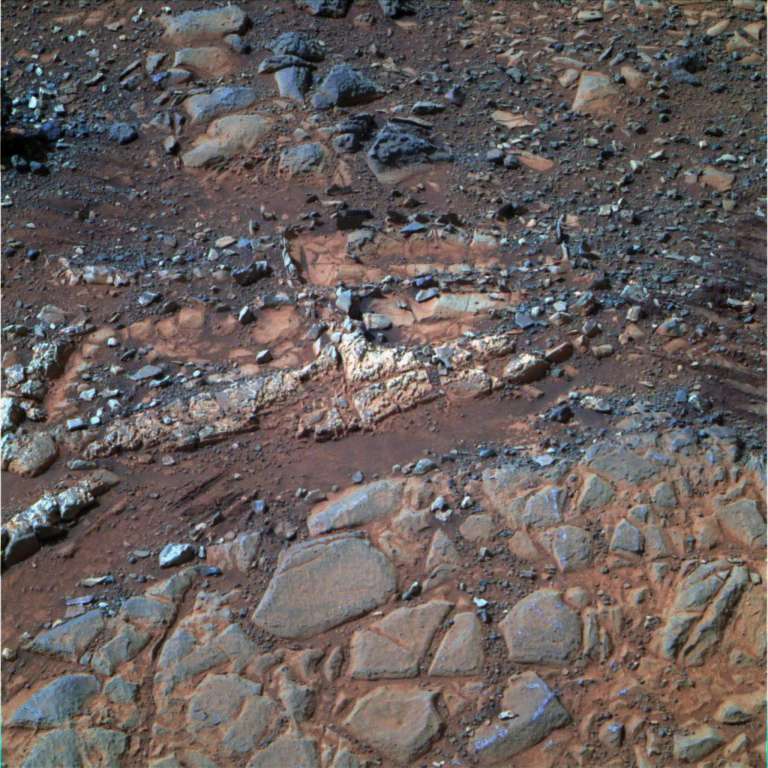
Spirit and Opportunity also confirmed to us that there are some things you just can’t see from orbit and that there’s no substitute for wheels on the ground. For instance, Spirit was sent to Gusev crater because we thought it was an ancient lake based on its shape in orbital images, yet the rover landed on top of young lava flows that buried any geologic evidence of an ancient Lake Gusev. The science team dubbed the plains of Gusev crater a “basalt prison” out of a mixture of frustration and affection. It wasn’t until Spirit escaped the prison by ascending into the Columbia Hills that it found minerals that form in watery environments. Spirit’s discoveries at Home Plate could never have been predicted from orbital data but were just as compelling as an ancient lake would have been in the search for life. The evidence was just below the surface or too small to be seen by even the highest-resolution cameras. Every place we land, we are almost certain to learn something new and potentially paradigm-shifting.
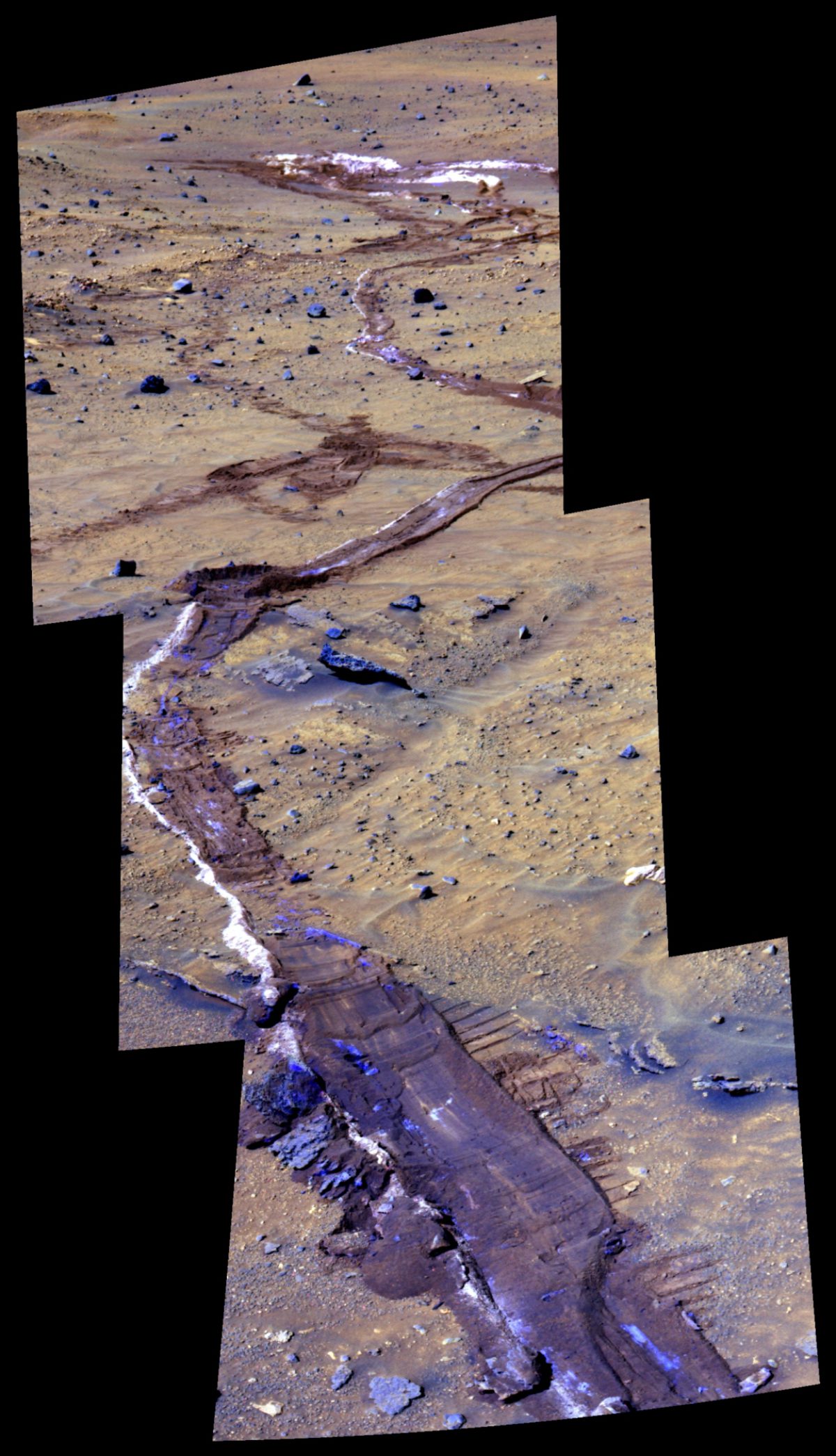
The Legacy of Spirit and Opportunity
The findings from the Mars Exploration Rovers allowed the Mars science community to develop our strategy for Mars exploration beyond “follow the water” to the more complicated question of whether these watery environments were ever habitable. Very loosely defined, a habitable environment is one that has the 2 other essential requirements in addition to liquid water that are needed to support life as we know it: a source of carbon and a source of energy. The Mars Science Laboratory mission’s Curiosity rover, which landed on Mars in 2012, carried a larger and more complicated payload than the Mars Exploration Rovers. Curiosity is capable of finding evidence of all 3 of these requirements. In fact, it has succeeded: within its landing site at Gale crater, Curiosity found ancient river and lake deposits that preserved carbon-containing compounds as well as evidence for water chemistry that could power microbial metabolism. Today, we not only know that Mars was once wet—it was also habitable.
Almost 2 decades after Spirit and Opportunity and a decade after Curiosity landed, NASA’s Mars 2020 rover and ESA’s ExoMars rover are now poised to address the most challenging question in our search for life on Mars when it lands in February 2021: did it exist? The designs of these missions and the selections of their landing sites rest on what we learned from Spirit and Opportunity.
At the Thai-food-fueled, end-of-mission celebration, people were in a reflective mood. They told stories about their experiences during mission development and reminisced about the escapades that had occurred over 14 years of operations. For all this looking back, there was just as much anticipation of the road ahead: “What are you working on now?” “Can you tell me more about your new mission concept?”
Spirit and Opportunity took humanity on a great adventure and set the bar extremely high for what we can accomplish with robotic space exploration. Although the rovers leave big wheel prints to fill, they have also opened the door to dreams of even greater voyages. We’ve demonstrated the power of mobility on the ground. Now, we are looking to the skies of other worlds to travel farther and faster. A helicopter will ride along with the Mars 2020 rover, and NASA recently announced that it will send a drone called Dragonfly to soar above the sand dunes and lakes of Titan in the 2030s.
Spirit and Opportunity showed us just a small taste of the richness of Mars’ past. I believe we have only just begun to understand the full complexity of Martian history and to piece together what Mars’ 3-to-4-billion-year-old rocks can tell us about how planets inside and outside our solar system can evolve into habitable worlds. As the mission’s principal investigator Steve Squyres said at the end of the final science team meeting, “The biggest stuff is still ahead, and I think [enabling] that in large measure may be the greatest legacy that this project has.”
(For those wondering, the Thai food I had ordered for the celebration exceeded mission-success criteria, like Spirit and Opportunity. We ended up with abundant leftovers that were consumed by eager Caltech grad students the next day.)
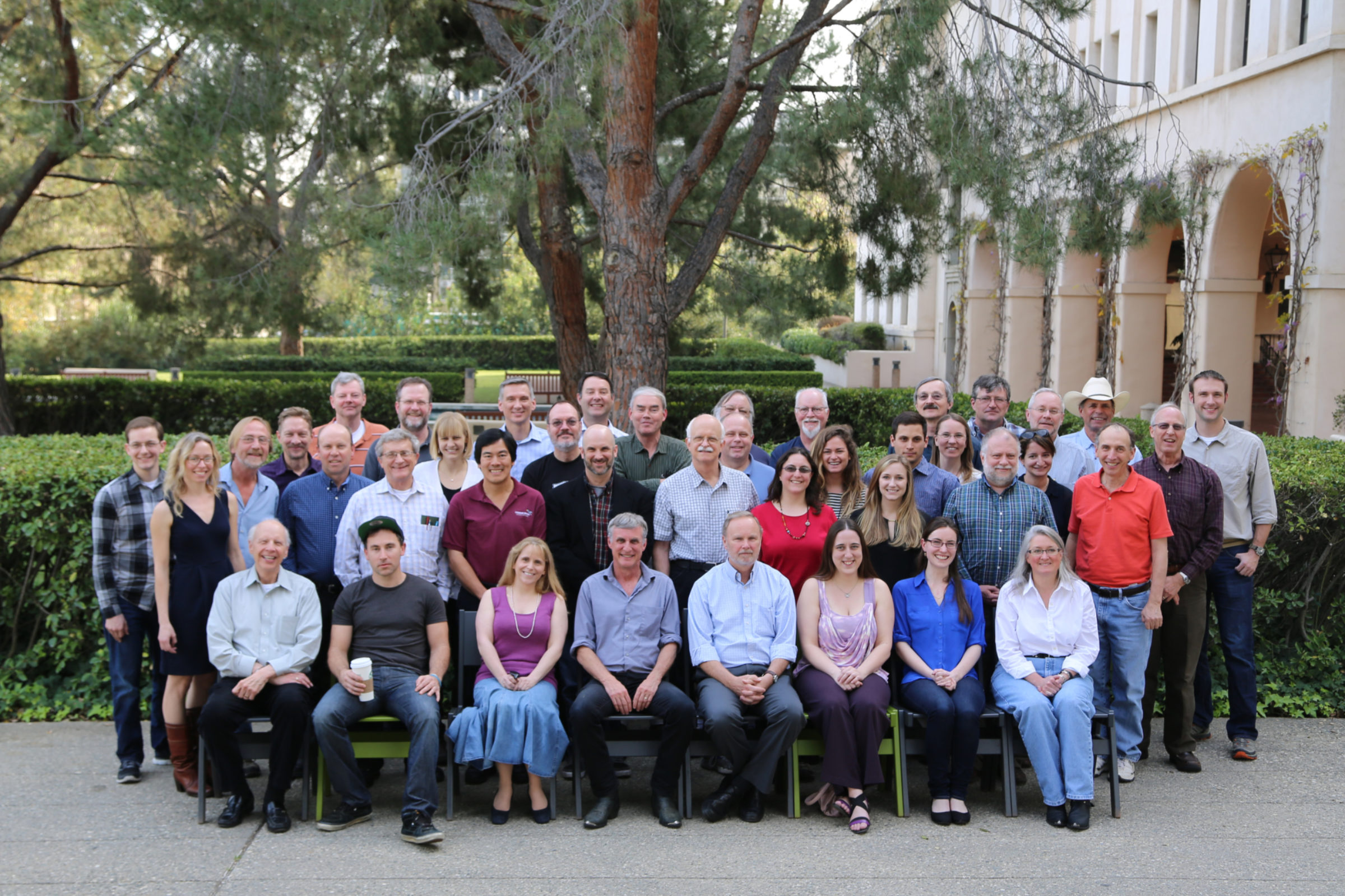
Support our core enterprises
Your support powers our mission to explore worlds, find life, and defend Earth. You make all the difference when you make a gift. Give today!
DonateThe Planetary Report • December Solstice
Help advance space science and exploration! Become a member of The Planetary Society and you'll receive the full PDF and print versions of The Planetary Report.


 Explore Worlds
Explore Worlds Find Life
Find Life Defend Earth
Defend Earth


